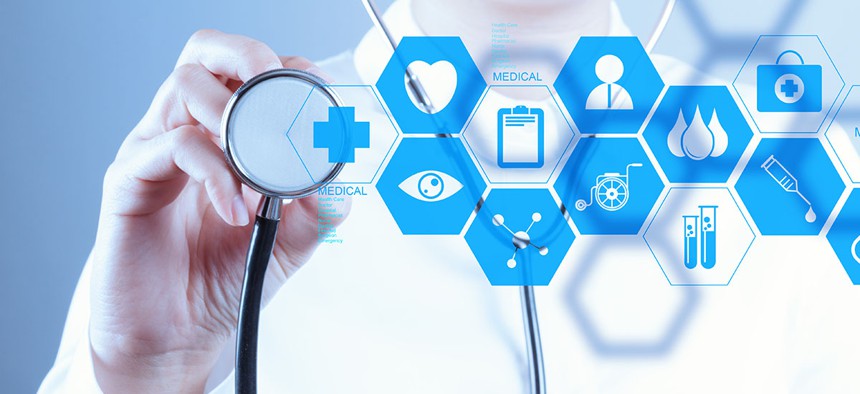Expect Tough Fight for a Piece of the Growing $6B Health IT Market

ESB Professional/Shutterstock.com
Defense and Veterans Affairs departments likely will drive increased spending, according to one analyst.
Federal government health information technology spending is set to increase $400 million over the next five years, but fiscal year 2017 is shaping up to be extremely competitive.
According to Deltek research, the federal government is likely to spend some $6.4 billion on health IT across all agencies in fiscal 2021, up from $6 billion spent in fiscal 2016.
However, the federal health IT market will actually see a significant dip in funding for fiscal 2017—a $700 million decrease—mostly because of a planned downturn in spending by the Centers for Medicaid and Medicare Services allocated for the rollout of the Affordable Care Act.
» Get the best federal technology news and ideas delivered right to your inbox. Sign up here.
Angie Petty, senior principal analyst for Deltek, told Nextgov the federal health IT market in fiscal 2017 will likely be “more competitive as contractors fight for a smaller slice of the pie,” but the total health IT spend kicks up dramatically from fiscal 2018 through fiscal 2021.
That growth is likely to come from an increase in health IT spending across the departments of Defense and Veterans Affairs, Petty said, in part because President-elect Donald Trump has frequently said military personnel and veterans alike need to receive better care.
VA has been a leader in telehealth and is in the midst of trying to set up a digital health platform, while DOD will spend heavily on the $4.3 billion Defense Healthcare Management System Modernization contract it awarded to Leidos in 2015.
Civilian health agency spending is less certain, as “future health initiatives remain largely uncertain under a new presidency,” the report states. Yet, current legislation and administrative policy will drive some future spending. The 21st Century Cures Act, for example, will direct several billion dollars through the National Institutes of Health and, to a lesser extent, the Food and Drug Administration. While much of that money will be for medical research and development, some will be used for IT purposes.
Petty said other health IT drivers will be agency infrastructure modernizations, data standardization, data integrity, interoperability, analytics, storage, cloud computing adoption and mobile applications. Increased spending on cybersecurity, too, she said, is likely to be another important driver over the next five years.



